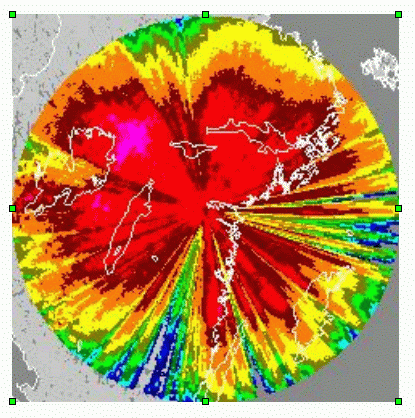Radar Meteorology Glossary
This glossary will be the main reference for radar products and problems and will give details on what the different products are and how they are used.
Browse the glossary using this index
Special | A | B | C | D | E | F | G | H | I | J | K | L | M | N | O | P | Q | R | S | T | U | V | W | X | Y | Z | ALL
R |
|---|
Radial VelocityComponent of target motion parallel to the beam axis. Also known as Doppler velocity. | |
Rainfall rate estimation | ||
Range binDiscrete element along a single radial of radar data at which the received signals are sampled. Range bins from POLDIRAD data are spaced at multiples of 150 m intervals. See also sample volume. | ||
Range FoldingApparent range placement of a multiple return. A multiple return appears at the difference of the true range and a multiple of the unambiguous range. | |
Range Height IndicatorDisplay on which radar signals are shown with height as the vertical axis and range as the horizontal axis, forming a vertical cross section of a cloud or precipitation system. | ||
Range NormalizationA receiver gain function which compensates for the effect of range on the received power for an equivalent reflectivity. | |
Range ResolutionAbility of the radar to distinguish two targets along the same radial, it is approximately one half the pulse length. | |
Rayleigh ScatteringChanges in direction of electromagnetic energy by particles whose diameters are 1/16 wavelength or less. | |
Reflectivity factorIntegral over the backscatter cross-section of the particles in a pulse volume. For particles small compared to the wavelength the scatter cross-section is D6, where D is the diameter of the particle. Radars are calibrated in the way to give directly (assuming the dielectric constant of water) the reflectivity factor from the received backscattered energy. Units for the reflectivity factor are mm6 m-3 or the logarithmic value of this in dBZ. | |
